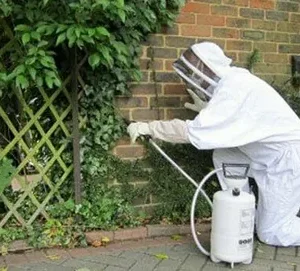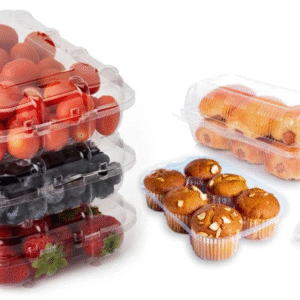In emergency medicine, securing a patient’s airway is one of the most critical steps in ensuring survival. Whether in the emergency department (ED), in an ambulance, or at the scene of an accident, healthcare providers must act quickly and efficiently to establish and maintain an open airway. Intubation is a life-saving procedure, but it comes with its challenges. It requires precision, skill, and the right tools.
In recent years, the advent of the Single Use Intubation Stylet has provided a new, effective way to perform this procedure with improved outcomes. By offering significant advantages in terms of safety, efficiency, and ease of use, this device has had a profound impact on patient outcomes in emergency medicine.
This article explores how the single-use intubation stylet enhances patient care, helping healthcare providers perform intubation procedures with greater confidence and better results.
1. Reducing the Risk of Infection and Cross-Contamination:
One of the primary concerns in emergency settings is the risk of infection. Patients arriving in emergency departments often have compromised immune systems, whether due to trauma, underlying conditions, or the nature of their emergency. Cross-contamination between patients is an unfortunate but real concern, especially when using reusable medical devices like intubation stylets. No matter how well these devices are cleaned and sterilized, there’s always a risk of infection transmission.
Single-use intubation stylets solve this problem by providing a completely sterile device for each procedure. Since they are discarded after a single use, there is no risk of cross-contamination between patients. This significantly reduces the chances of healthcare-associated infections (HAIs), a major concern in hospital settings, especially in emergency medicine where patients are often at high risk for infections.
By eliminating this risk, the single-use stylet directly contributes to improved patient safety, leading to better outcomes, especially in vulnerable or critically ill patients.
2. Faster Response Time and Streamlined Procedures:
Emergency situations demand fast decision-making and rapid action. Delays in securing a patient’s airway can lead to serious complications, including hypoxia (lack of oxygen), brain injury, or even death. Traditional intubation stylets often need to be cleaned and sterilized after each use, which can introduce significant delays in procedures.
Single-use intubation stylets, however, are ready for immediate use right out of the package. Since they are pre-sterilized and do not require any preparation, medical teams can move much more quickly during critical moments. This is especially important in high-pressure situations, where every second counts, such as in cases of trauma, cardiac arrest, or severe respiratory distress.
By reducing the time spent on preparation and eliminating the need for sterilization, single-use stylets ensure that healthcare providers can perform intubation procedures with minimal delay, leading to faster, more efficient care and ultimately improving patient outcomes.
3. Consistent Performance and Reliability:
In emergency medicine, healthcare providers rely on their tools to perform as expected in high-stress situations. Reusable intubation stylets can suffer from wear and tear over time, leading to inconsistent performance. A stylet that has been used multiple times may bend, lose rigidity, or become damaged, making it more difficult to achieve a successful intubation.
Single-use intubation stylets, on the other hand, offer consistent performance every time they are used. Each stylet is designed for one-time use, ensuring that it retains its full strength, flexibility, and rigidity. With no prior use or wear to affect its performance, the stylet provides a reliable and efficient tool for healthcare providers, reducing the likelihood of complications or failure during intubation.
This consistency is especially important in emergency medicine, where the conditions are often chaotic, and the medical team is under significant pressure. The peace of mind that comes with using a fully reliable device contributes to better decision-making and smoother, more successful procedures, which, in turn, leads to improved patient outcomes.
4. Easier and More Effective Intubation in Difficult Airway Cases:
In some emergency cases, patients may have a difficult airway, meaning that securing the airway is more challenging than usual. This could be due to swelling, trauma, anatomical anomalies, or other factors. In such cases, intubation requires careful technique and precise control of the airway.
Single-use intubation stylets are specifically designed to offer optimal rigidity and flexibility for airway manipulation, allowing healthcare providers to navigate even the most challenging airways more effectively. With the ability to manipulate the stylet and tube more easily, providers can position the endotracheal tube with greater accuracy, ensuring that it enters the trachea and not the esophagus.
By making intubation easier and more effective, single-use stylets increase the chances of a successful procedure, especially in patients with complex or difficult airways. This, in turn, helps to prevent complications such as accidental esophageal intubation or inadequate ventilation, both of which can have serious consequences for the patient.
5. Enhanced Safety for Healthcare Providers:
The safety of healthcare providers is also a critical factor in emergency medicine. Reusable equipment, while cost-effective, can pose risks to the healthcare team during cleaning, sterilization, and handling, especially in the high-stress environment of the emergency room or pre-hospital care.
Single-use intubation stylets help reduce these risks. Since the devices are disposed of after each use, healthcare providers avoid direct exposure to potentially contaminated equipment. This is especially important in emergency medicine, where time constraints and the high volume of patients may make thorough cleaning between uses challenging. The single-use design removes the burden of sterilization protocols and lowers the risk of injury or exposure to bloodborne pathogens, contributing to a safer working environment for healthcare providers.
6. Cost-Effectiveness in the Long Run:
While single-use products are often perceived as more expensive, their value becomes clear when considering long-term costs. In emergency medicine, healthcare providers must be prepared to act at a moment’s notice, with a constant need for sterile, reliable tools. The cost of maintaining reusable intubation stylets—through cleaning, sterilization, and regular inspection—can add up significantly over time.
Single-use stylets, though individually more expensive, eliminate these ongoing costs. They remove the need for labor-intensive cleaning processes and reduce the risk of equipment failure, which could result in costly complications. Additionally, by improving the speed and success of intubation procedures, single-use stylets can help reduce the overall cost of patient care, preventing extended hospital stays or the need for additional interventions.
7. Better Compliance with Infection Control Standards:
In many healthcare facilities, infection control and prevention are top priorities, particularly in high-risk environments like emergency departments. Reusable equipment, even when cleaned thoroughly, can still pose a risk of infection transmission. Single-use devices, by eliminating this concern entirely, help hospitals meet and exceed infection control standards set by regulatory bodies like the Centers for Disease Control and Prevention (CDC) and the World Health Organization (WHO).
By using single-use intubation stylets, hospitals can demonstrate their commitment to patient safety and infection prevention. This not only enhances patient outcomes but also helps to protect the reputation and credibility of healthcare institutions.
Conclusion:
The single-use intubation stylet has proven to be a crucial tool in emergency medicine, improving patient outcomes in a variety of ways. From reducing the risk of infection and streamlining procedures to providing consistent performance and ensuring healthcare provider safety, the single-use stylet enhances both the efficiency and effectiveness of airway management.
In the fast-paced, high-stakes world of emergency care, where every second counts, the single-use intubation stylet has become a game-changing innovation, ensuring that patients receive the best possible care, with the highest standards of safety, and leading to better outcomes across the board.





